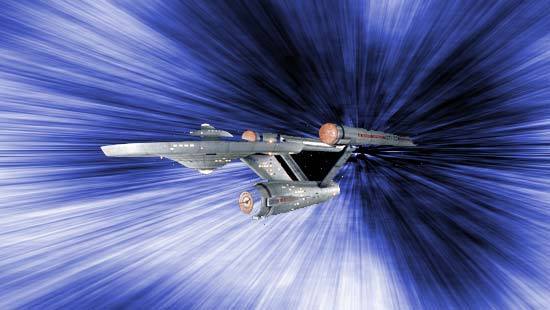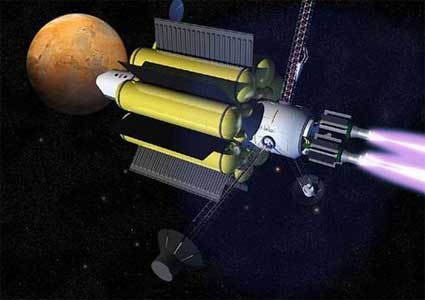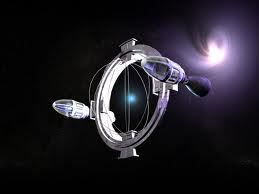Man has always been curious about the universe and wanted to explore its mysteries. Apart from sending unmanned spacecrafts to explore the universe, astronauts have landed and walked on the Moon and orbited the Earth. However, man is yet to land on another planet in our solar system leave alone venture beyond the solar system to explore other stars and galaxies.

The immense distance between the Earth and other planets, stars and galaxies makes deep space travel appear impossible even with the most advanced technology. For example, the nearest star Proxima Centauri is 21.1 trillion miles (39.9 trillion kilometers) from Earth.
To travel such long distances, man would have to come up with a source of power to drive spacecrafts for such long distances, find ways to overcome the extreme radiation and problems of microgravity found in deep space, a long lasting source of food and water and a method of communicating with Earth from deep space.
NASA researchers, engineers and other scientists are researching and working hard to come up with technologies that can overcome these challenges and make deep space travel a reality.
Past Space Travel Technology
In the past and present, chemical rockets have been used to launch spacecrafts from Earth and put them into space. The space shuttles (1981-2011) are an example of chemical rockets used for space travel. The space shuttles completed 134 missions including the assembly of the International Space Station and launch of the Hubble Space Telescope.
However, chemical rockets are outdated, extremely inefficient and very expensive. Exploring the solar system using chemical rocket systems would require a lot of fuel and reaching the nearest star to us would require more fuel than is available on Earth. This has driven scientists to research better and more efficient propulsion technologies to make deep space travel a reality.
Some missions have taken advantage of gravity assist from other planets to propel spacecrafts to their destination much faster and using less fuel to overcome the gravitational pull of the planets and sun. However, this technique can only be used when the planets are at a specific place at a specific time. For example, the Voyager space probes sent to explore the outer planets in the solar system and later move into interstellar space launched during a special alignment of the outer planets that happens every 176 years so they could benefit from gravity assist to reach their destinations.
Future Space Travel Technology
Scientists have identified space travel technologies that are much more efficient than chemical rockets and can be used to make interstellar travel a reality. Some of these technologies have been tested and proven while others are in the research and development stage and may be ready for testing in a few years.
Some of the ideas they have proposed include the use of spacecrafts powered by solar sails, super-precise and atomic powered navigation instruments, laser relays to achieve long distance communication, technologies that take advantage of loopholes in the laws of physics, and use of nuclear bombs to achieve speeds near that of light, which is the universal speed limit. Let us explore these future space travel possibilities.
Ion Thruster
An ion thruster or ion drive is a strong possibility for future space travel. It requires very low thrust applied over a long period. Since space is a vacuum, the low thrust is able to propel a spacecraft.
To create thrust, it ejects charged ions, gas or plasma out of its electric engine. This electric engine is more efficient than a chemical rocket because it consumes much less fuel.
An ion thruster has already been used successfully. The Deep Space 1 probe was the first ion drive in space. It was propelled by a xenon gas ion engine. The 2003-2010 Japanese probe Hayabusa was propelled by four xenon ion engines on its mission to study an asteroid.
Solar Sails
Solar sails are spacecrafts that will be propelled by solar wind. A spacecraft designed with a giant sail made up of ultra thin mirrors can take advantage of light and high-speed gases emitted by the sun to achieve incredible speeds.
The light and gases from the sun would have very small pressure. However, space is a vacuum and there is no friction. In such an environment, the pressure can build up with time or aided by the use of powerful lasers and be capable of propelling a spacecraft at incredible speed.
This space travel technology was applied successfully in May 2010 with the launch of the Japanese Ikaros probe that is exploring the solar system.

Nuclear Propulsion
Nuclear propulsion is simple, fast, cost efficient and the best thing is that it is an available and proven technology. A spacecraft driven by nuclear pulse propulsion would have a series of small nuclear bombs dropped and detonated out of its back to achieve the desired speed. There would be a large shield to protect the spacecraft from damages and radiation and dampeners to deal with G force effects and ensure smooth acceleration.
A spacecraft driven by nuclear propulsion can achieve a speed that is 12% that of light. It would take such a spacecraft only 13 seconds to reach the Moon. Apollo 11, driven by a chemical rocket, took four days to make this journey. Using nuclear pulse propulsion, a spacecraft would reach our nearest star Proxima Centauri in 35 years.
Some of the projects where the nuclear propulsion technology has been explored include US military’s Orion, British Interplanetary Society’s Daedalus and PSU’s Ican and Aimstar.
Nuclear Fusion
Nuclear fusion is efficient technology with long-term acceleration potential. A spacecraft propelled by a nuclear fusion engine would not need to carry a lot of fuel.
Such a spacecraft would use the energy generated from a fusion reaction meant to generate electricity. The electricity would heat plasma to provide thrust. Such a spacecraft can also use the plasma-based exhaust from the fusion reaction as a source of thrust.
However, this technology is not available right now. It is still in the research, development and experimental stage.

Antimatter
This is the most potent and efficient source of fuel known as of now. Antimatter is matter with reversed charges. When it encounters normal matter, a reaction occurs that produces an incredible blast of pure energy.
It is so efficient and potent that just a coin-sized piece of antimatter has enough energy to drive a space shuttle into orbit. However, the production and storage of antimatter remains a challenge in its application in space travel.
A spacecraft with an engine using antimatter would have a beam of antimatter released into an engine core to produce energy to propel the spacecraft. Another way would involve releasing anti-matter to react with a solar sail and produce energy.
Using anti-matter for propulsion, a spacecraft can achieve 70% the speed of light and reach the nearest star to us in just six years.

Warp Drive
Warp speed is faster than light travel, which is the universal speed limit. Some physicists are researching ways to exploit the technical loopholes of physics to achieve faster than light travel speed just like in science fiction movies.
NASA researchers believe that spacetime travelled faster than the speed of light just after the Big Bang and are looking for ways to make spacetime achieve faster than light speed again.
Since spacetime can achieve faster than light speed, they believe it is possible for a warp drive to travel faster than light by having spacetime propel it through space. This way, the spacecraft would not break the law of physics to achieve faster than light speed. Rather, it would be moved by spacetime.
Space Travel without Leaving Earth
In the future, possibilities for interstellar travel include space travel without leaving Earth with the Earth acting as the spaceship or another future terraformed planet such as Mars or Venus.
Scientists believe it is possible to control the motion of our intact solar system within the Milky Way Galaxy and make it possible for human beings to migrate to another star without leaving Earth or the solar system.
If this were possible, human beings would be able to direct the solar system towards another star located elsewhere in the galaxy and similar to the sun.
Using stellar engines, astronomers foresee that it will be possible to move our solar system in an intact form or as a Dyson Sphere just in case the Milky Way Galaxy changes in an unpleasant way making such a move necessary.
Stellar Engines
A stellar engine is a device that consumes a significant part of a star’s resources to produce energy. There are three types of stellar engines. A Class A stellar engine uses the impulse of the radiation emitted by any appropriate star to produce a vectored thrust force, which can generate work when acting at a distance.
Dr. Shkadov’s 1987 thruster is an example of a Class A stellar engine and demonstrates the possibility of controlling the movement of the solar system in the galaxy. It was made up of a mirror positioned some distance from the sun. The solar sail-like mirror would cause the central symmetry of the solar radiation in the Sun-mirror system to be violated causing a certain thrust force to be instigated. This scientist proved that with a well-designed system, the thrust force could allow a significant deviation of the solar system’s usual and expected trajectory in our galaxy.
A Class B stellar engine uses the energy given out by a star to generate mechanical power. Badescu proposed such an engine composed of two shell-surfaces englobing a star with the inner shell surface acting as a solar energy collector and the outer shell surface acting as a thermal radiator. The difference between the temperatures of the two shells determines a heat flux from the inner shell to the outer one. This flux can enter an ordinary thermal engine used to generate power.
A Class C Stellar Engine is a blend of Class A and Class B stellar engines. It uses the impulse and the energy of a star’s radiation to provide both a thrust force and mechanical power. This technology could provide the power and possibility of interstellar travel.
Robotic Mining on Asteroids
By around 2022, astronomers predict that Robotic mining for resources on asteroids will be conducted by private space exploration firms.
